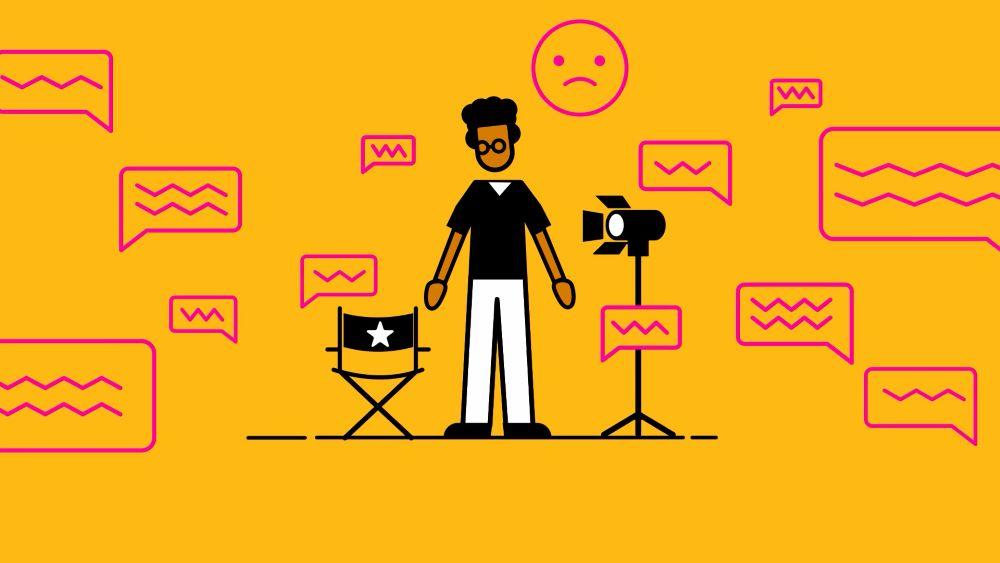When a homeless charity wants to share client success stories but can’t show faces on camera, what’s the answer? When a mental health organisation needs to explain complex trauma treatments without triggering viewers, how do they proceed? Animation offers powerful answers to these common charity communication challenges.
While filmed testimonials remain the gold standard for emotional connection, they represent only half the storytelling toolkit available to nonprofits. This guide explores when animation becomes not just useful, but essential for charity communications.
There are several reasons why you may want additional videos, and filming is not always the most suitable approach; this is where charity animation or explainer video comes in. We’ve just launched a new page, Charity Animation Services. Generally, for video production companies, animation tends to fall under their general Charity video page. We’ve produced hundreds of charity videos, and we can see a clear difference between the two, knowing when it will work well, as opposed to a filmed video.
Explaining complex issues simply
Animation created specifically to your charity’s needs is a great way to visualise abstract concepts and statistics, for example, simplifying reports or turning numbers into tangible visuals.
Charity animation can also be used to make complicated social issues more digestible through simple drawings and explanations. Studios with a specialist animation department, who are used to solving these kinds of challenges, can use many visual devices and styles of illustration and animation to explain complex issues in an accessible way.
Charities often want to demonstrate their impact, and hearing from people does this to an extent, which also brings the emotional impact. But using a charity animation alongside this really transforms data into engaging visual stories, for example, turning your annual report into an animation.
Protecting vulnerable identities
Many charity communications involve sensitive topics that can’t be filmed directly – from protecting vulnerable clients to explaining abstract concepts like poverty cycles. Yet most nonprofits default to live-action video for every project.
Animation is a brilliant tool for sharing information about your charity and your activities while safeguarding clients or service users. Since the script is written by experts and every frame is drawn, it provides anonymity for sensitive populations.
If you can’t film your service users, animation allows you to share personal stories without privacy concerns, anonymising the person while sharing their experience. Or even creating a a similar story, that is only loosely based on their experience.
Sometimes, sharing a story in person to camera, with a director and camera operator present, and the pressure (even from the friendliest of crew members) can be just too much for people. It can be triggering or too harrowing for them to share.
Having a discreet discussion, or taped interview, not in front of a camera, and then sharing part of it anonymously through animation can help to prevent re-traumatisation of vulnerable individuals. We’ve found that often people do want to share their story, especially if they’re through the worst, but the camera can still be too nerve-wracking.
Charity animation for young people’s charity – promoting their work working with vulnerable youths.
This animation demonstrates how we shared compelling stories from vulnerable youth while maintaining complete anonymity.
Depicting inaccessible scenarios
The third sector is vast and encompasses many other industries, including care, medical and mental health, environment, and more. Filming for a charity that operates over multiple sites or has multiple sectors it reaches may be far too costly and a difficult to film all for a holistic picture of the work.
Additionally, we often find that non-profit organisations often provide services, which can make it challenging to fully convey what the service entails or its impact. This is especially when using filming alone. Apart from people, there is sometimes not much to see.
Using visual metaphors and well-thought-out design and illustration, you can convey just about anything with animation, from historical events, items and locations around the globe, a variety of people to future projections of impact.
You can use animation to visualise the global reach of programs or demonstrate before/after transformations. You can also use illustrated scenes to portray dangerous situations safely, without actually creating further risk by filming.
Charity Animation for Collaboration Circle to explain a new way of funding. Using a mixture of animation and photos to create excitement and explain a complex topic.
Public information charity animation for SEL Mind to encourage people to take up physical checks. We used animated characters and accessible design to show why it’s important and how to book.
Creating an emotional connection
Some may be unsure whether animation can still create that emotional connection that is so palpable when with a filmed video, and it’s partly true – a lower-end animation won’t have this. For a example, low budget, not much character movement, fewer scenes, stock assets – this all brings very little emotion to the final product.
High-level video will bring it, though. In our studio, we measure animation in 3-4 quality levels. the levels broadly indicate how much time is spent on the design and animation stages, so more time equals more scenes, more detailed drawings, more movement, more dynamism, better transitions, and more realism. This immersive flow from scene to scene draws the audience in far better than a low-quality animation.
Animation creates approachable entry points for sensitive topics. With a professional emotive script to tell the story, you can set the tone exactly and explain in an audience-appropriate manner, whether for children, adults, or any other demographic. A skilled illustrator will design characters and scenes that are specifically designed to evoke emotions and help viewers connect with challenging subjects.
Brand consistency
When you procure a charity animation from a video production studio, normally it will be created with bespoke illustrations for your animation. Considerations such as colours, fonts, shapes, layouts, and any characters will be in place to ensure the branding is fully aligned and establishes a recognisable visual style. A studio would also typically give the charity the opportunity to review the illustrated storyboard before animation to ensure quality control.
Having a well-thought-out brand that is of high quality and instantly recognisable in images and videos means consistent branding across campaigns and platforms, and the ability to stop people in their scroll.
Explainer animation for Homeless Link – explaining their new findings around nutrition for people experiencing homelessness and actionable steps that staff and front-line services can take. We utilised their existing branding and built upon their characters to ensure consistency with their brand.
Explainer video for Urgent Action fund – using animation as an About Us style video.
Accessibility across languages and cultures
Animation is easily adaptable for international audiences, and there are several approaches to localisation, depending on how many of your audience members speak the language and your budget constraints.
First of all, the lowest cost option is foreign language subtitles. We recommend human translation for correctness; this makes it easy for the user to select their language and read along. Creating SRTs is relatively quick and cheap way to make content more accessible.
If your work is more global, or you’re reaching audiences in the UK or the USA regularly, who don’t have English as their first language, which is common, then it’s better to localise the video entirely. Full localisation would include translating and re-recording any voiceover in the native language, and all on-screen captions changed over to the new language.
This complete localisation makes the video much more immersive and less of an afterthought. We created a video with a mixture of 5 subtitle languages and six variations of localisation, including Pashto, Bengali, Hindi, etc, to ensure the audience thoroughly understands the message.
A studio can dub a filmed video or add subtitles, but it can be more costly and time-consuming, and dubbing isn’t usually considered as immersive as the original.
Longevity of content
Animation can age better than live action, as it features less specific people or trends that can be quick to change. For example, if you’ve spent days planning, filming, and editing a member of your team to feature in a series of videos, and then they leave the organisation. They may have gone on great terms, but it still ages the content quickly.
Therefore, animated content often has a longer shelf life due to this staff and volunteer turnover. We also see that signage and premises changes can age a video. When working with an animated video, there is no visual specificity. Additionally, returning to the studio to add short scenes or swap small bits of voiceover is also usually inexpensive, for example, when a number or location changes.
When to use Animation
As a quick summary, use animation when protecting identities, explaining complex data, reaching international audiences, or requiring long-term content.
Use live-action when: building donor trust, sharing personal testimonials, demonstrating real impact, and working with limited budgets.
Summary
Throughout our years of charity video production, we’ve encountered numerous situations where filming isn’t possible or appropriate, ranging from safeguarding vulnerable clients to explaining complex social issues that lack a visual component.
This content is produced by Digital Finch, a charity video production company. While we aim to provide objective guidance, readers should consider multiple providers.
If you’re a charity organisation considering whether to choose filmed video or animation for your next project, get in touch with Digital Finch for a quick, no-obligation consultation to discuss your specific needs.
Victoria Finch is Creative Director at Digital Finch, with over 15 years of experience in charity video production. She has produced hundreds of videos for nonprofits across the UK, specialising in animation for sensitive topics and complex social issues. She also runs a non-profit promoting gardening for wildlife and hosting nature-based / art workshops.



